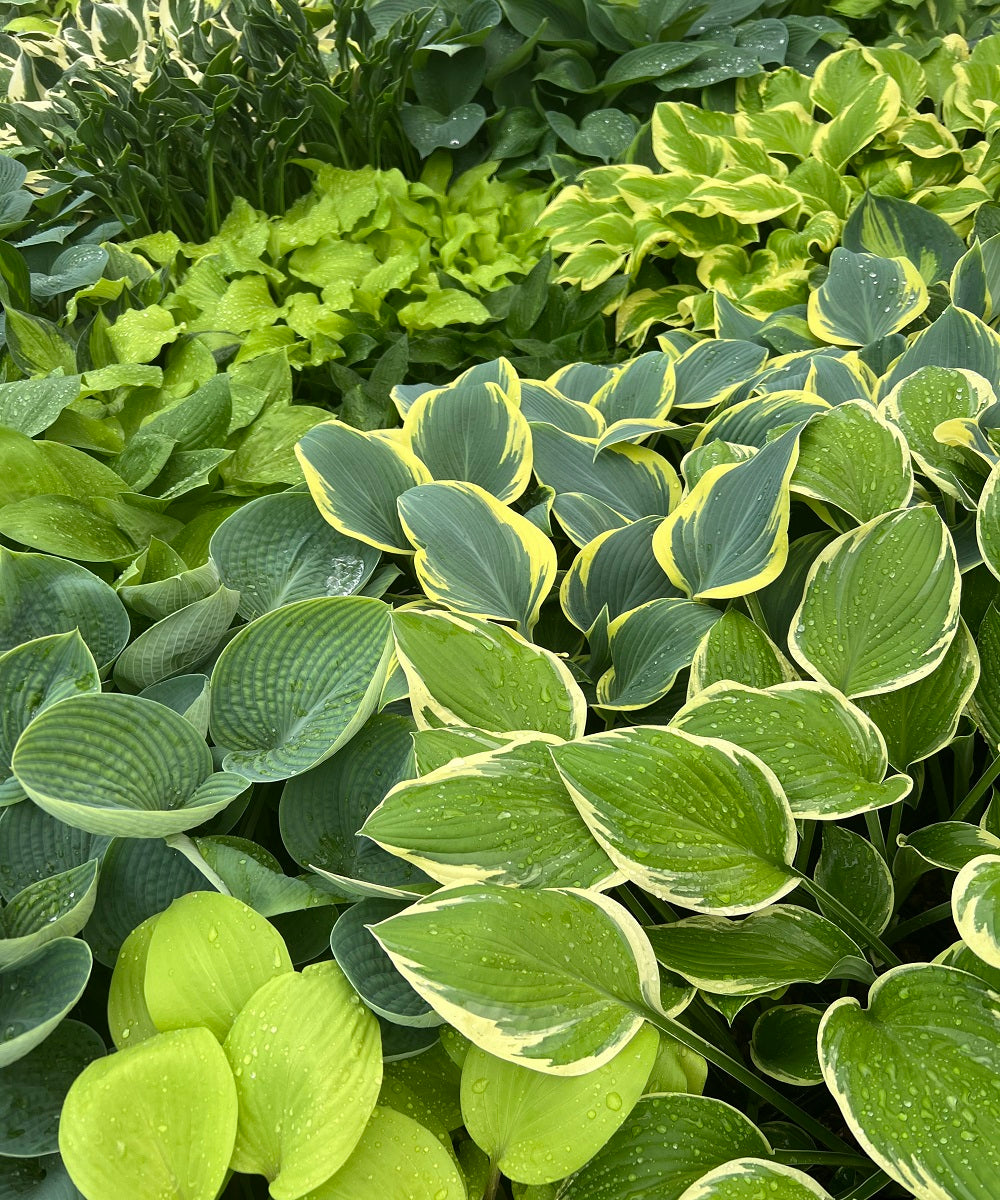
When it comes to creating lush, low-maintenance ground cover, hostas offer a beautiful option. Their broad, leafy foliage forms dense clumps that suppress weeds, conserve moisture, and add rich texture to shaded garden spaces. Whether you’re looking to fill the front of a shady border or enhance a woodland garden, hostas can provide a stunning, easy-care solution.
1. Low Maintenance
Hostas don't require a lot of maintenance and once established and also self sustaining, as long as they get a little watering during extreme heat and a small amount of fertiliser early in the season, they will do the rest!
2. Weed Suppression
The large leaves of hostas create a dense canopy that blocks sunlight, helping to prevent weed growth. This natural weed control reduces the need for chemical herbicides and saves gardeners time and effort.
3. Drought and Shade Tolerance
Hostas perform well in areas where other plants may struggle, such as beneath trees, along shaded pathways, or darker sections of the garden. Their deep-rooting systems help them withstand periods of drought better than shallow-rooted grasses or other traditional ground cover.
4. Aesthetic Appeal
With their wide variety of colours, shapes, and sizes, hostas can create a visually striking ground cover. From the bold, golden hues of ‘Golden Spider’ to the deep blue-green of ‘Blue Cadet’, there’s a hosta for every design preference.

When selecting hostas for ground cover, consider the following factors:
Size: Small and medium varieties like ‘Golden Tiara’, ‘June’ and ‘Blue Mouse Ears’ spread quickly and fill gaps effectively.
Colour Contrast: Use a mix of variegated, blue, and green hostas to add depth and visual interest.
Growth Rate: Fast-spreading cultivars such as ‘Royal Standard’ and ‘Goldrush’ are ideal for covering large areas efficiently.

1. Site Preparation
Clear the area of weeds and debris before planting.
Improve soil drainage by incorporating organic matter like compost or leaf mulch.
Space hostas according to their mature size to allow for proper coverage without overcrowding.
2. Planting
Dig holes twice the width of the root ball and plant at the same depth as in the nursery pot.
Water thoroughly after planting to help establish strong root systems.
Apply a layer of mulch to retain moisture and regulate soil temperature.
3. Ongoing Care
Water deeply during dry spells, especially in the first year.
Divide overcrowded clumps every few years to maintain vigour and prevent congestion.
Watch for slug and snail activity, using organic deterrents if necessary.
Pairing hostas with other shade-loving perennials can enhance texture and colour diversity. Consider companion plants like:
Ferns – Add feathery contrast to hosta foliage.
Heucheras – Provide vibrant leaf colours in shades of red, purple, and orange.
Astilbes – Introduce soft, feathery flower plumes for seasonal interest.
